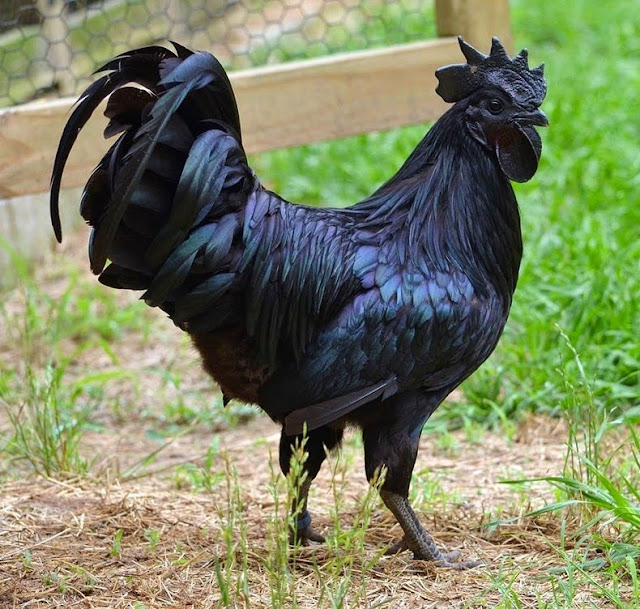Below is a complete phobia list for your reference. Read more about What Is A Phobia?
A
Ablutophobia: washing or bathing
Acarophobia: itching or of the insects that cause itching
Acerophobia: sourness
Achluophobia: darkness
Acousticophobia: noise
Acrophobia: heights
Aerophobia: drafts, air swallowing, or airborne noxious
substances
Aeroacrophobia: open high places
Aeronausiphobia: vomiting secondary to airsickness
Agateophobia: insanity
Agliophobia: pain
Agoraphobia: open spaces or of being in crowded, public
places like markets leaving
a safe place
Agraphobia: sexual abuse
Agrizoophobia: wild animals
Agyrophobia: streets or crossing the street
Aichmophobia: needles or pointed objects
Ailurophobia: cats
Albuminurophobia: kidney disease
Alektorophobia: chickens
Algophobia: pain
Alliumphobia: garlic
Allodoxaphobia: opinions
Altophobia: heights
Amathophobia: dust
Amaxophobia: riding in a car
Ambulophobia: walking
Amnesiphobia: amnesia
Amychophobia: scratches or being scratched
Anablephobia: looking up
Ancraophobia: wind (see Anemophobia)
Androphobia: men
Anemophobia: air drafts or wind (see Ancraophobia)
Anginophobia: angina, choking or narrowness
Anglophobia: England or English culture, etc
Angrophobia: anger or of becoming angry
Ankylophobia: immobility of a joint
Anthrophobia or Anthophobia: flowers
Anthropophobia: people or society
Antlophobia: floods
Anuptaphobia: staying single
Apeirophobia: infinity
Aphenphosmphobia: being touched (see Haphephobia)
Apiphobia: bees
Apotemnophobia: persons with amputations
Arachibutyrophobia: peanut butter sticking to the roof of the
mouth
Arachnephobia / Arachnophobia: spiders
Arithmophobia: numbers
Arrhenphobia: men
Arsonphobia: fire
Asthenophobia: fainting or weakness
Astraphobia / Astrapophobia: thunder and
lightning (see Ceraunophobia,
Keraunophobia)
Astrophobia: stars or celestial space
Asymmetriphobia: asymmetrical things
Ataxiophobia: ataxia (muscular incoordination)
Ataxophobia: disorder or untidiness
Atelophobia: imperfection
Atephobia: ruin or ruins
Athazagoraphobia: being forgotton or ignored or forgetting
Atomosophobia: atomic explosions
Atychiphobia: failure
Aulophobia: flutes
Aurophobia: gold
Auroraphobia: Northern lights
Autodysomophobia: one that has a vile odor
Automatonophobia: ventriloquist's dummies, animatronic
creatures, wax statues; anything
that falsely
represents a sentient being
Automysophobia: being dirty
Autophobia: being alone or of oneself
Aviophobia / Aviatophobia: flying
B
Bacteriophobia:
bacteria
Ballistophobia:
missiles or bullets
Bolshephobia:
Bolsheviks
Barophobia:
gravity
Basophobia
/
Basiphobia: Inability to stand walking or falling
Bathmophobia:
stairs or steep slopes
Bathophobia:
depth
Batophobia:
heights or being close to high buildings
Batrachophobia:
amphibians, e.g. frogs, salamanders, etc.
Belonephobia:
pins and needles (see Aichmophobia)
Bibliophobia:
books
Blennophobia:
slime
Bogyphobia:
bogeys or the bogeyman
Botanophobia:
plants
Bromidrosiphobia
/
Bromidrophobia: body smells
Brontophobia:
thunder and lightning
Bufonophobia:
toads
C
Cainophobia
/
Cainotophobia: newness, novelty
Caligynephobia:
beautiful women
Cancerophobia
/
Carcinophobia: cancer
Cardiophobia:
the heart
Carnophobia:
meat
Catagelophobia:
being ridiculed
Catapedaphobia:
jumping from high and low places
Cathisophobia:
sitting
Catoptrophobia:
mirrors
Cenophobia
/
Centophobia: new things or ideas
Ceraunophobia
/
Keraunophobia: thunder and lightning (see Astraphobia, Astrapophobia)
Chaetophobia:
hair
Cheimaphobia
/
Cheimatophobia: cold (see Frigophobia, Psychophobia)
Chemophobia:
chemicals or working with chemicals
Cherophobia:
gaiety
Chionophobia:
snow
Chiraptophobia:
being touched
Chirophobia:
hands
Chiroptophobia:
bats
Cholerophobia:
anger or the cholera
Chorophobia:
dancing
Chrometophobia
/
Chrematophobia: money
Chromophobia
/
Chromatophobia: colors
Chronophobia:
time
Chronomentrophobia:
clocks
Cibophobia:
food (see Sitophobia, Sitiophobia)
Claustrophobia:
confined spaces
Cleithrophobia
/
Cleisiophobia: being locked in an enclosed place
Cleptophobia:
stealing
Climacophobia:
stairs, climbing, or of falling downstairs
Clinophobia:
going to bed
Clithrophobia
/
Cleithrophobia: being enclosed
Cnidophobia:
stings
Cometophobia:
comets
Coimetrophobia:
cemeteries
Coitophobia:
coitus
Contreltophobia:
sexual abuse
Coprastasophobia:
constipation
Coprophobia:
feces
Consecotaleophobia:
chopsticks
Coulrophobia:
clowns
Counterphobia:
The preference by a phobic for fearful situations
Cremnophobia:
precipices
Cryophobia:
extreme cold, ice or frost
Crystallophobia:
crystals or glass
Cyberphobia:
computers or working on a computer
Cyclophobia:
bicycles
Cymophobia
/
Kymophobia: waves or wave like motions
Cynophobia:
dogs or rabies
Cypridophobia
/
Cypriphobia /
Cyprianophobia /
Cyprinophobia: prostitutes or venereal disease
D
Decidophobia:
making decisions
Defecaloesiophobia:
painful bowels movements
Deipnophobia:
dining or dinner conversations
Dementophobia:
insanity
Demonophobia
/
Daemonophobia: demons
Demophobia:
crowds (see Agoraphobia)
Dendrophobia:
trees
Dentophobia:
dentists
Dermatophobia:
skin lesions
Dermatosiophobia
/
Dermatophobia /
Dermatopathophobia: skin disease
Dextrophobia:
objects at the right side of the body
Diabetophobia:
diabetes
Didaskaleinophobia:
going to school
Dikephobia:
justice
Dinophobia:
dizziness or whirlpools
Diplophobia:
double vision
Dipsophobia:
drinking
Dishabiliophobia:
undressing in front of someone
Disposophobia:
throwing stuff out hoarding
Domatophobia:
houses or being in a house (see Eicophobia, Oikophobia)
Doraphobia:
fur or skins of animals
Doxophobia:
expressing opinions or of receiving praise
Dromophobia:
crossing streets
Dutchphobia:
the Dutch
Dysmorphophobia:
deformity
Dystychiphobia:
accidents
E
Ecophobia:
home
Eicophobia:
home surroundings (see Domatophobia, Oikophobia)
Eisoptrophobia:
mirrors or of seeing oneself in a mirror
Electrophobia:
electricity
Eleutherophobia:
freedom
Elurophobia:
cats (see Ailurophobia)
Emetophobia:
vomiting
Enetophobia:
pins
Enochlophobia:
crowds
Enosiophobia
/
Enissophobia: having committed an unpardonable sin or of criticism
Entomophobia:
insects
Eosophobia:
dawn or daylight
Ephebiphobia:
teenagers
Epistaxiophobia:
nosebleeds
Epistemophobia:
knowledge
Equinophobia:
horses
Eremophobia:
being oneself or of loneliness
Ereuthrophobia:
blushing
Ergasiophobia:
1. work or
functioning; 2. surgeon's
operating
Ergophobia:
work
Erotophobia:
sexual love or sexual questions
Euphobia:
hearing good news
Eurotophobia:
female genitalia
Erythrophobia
/
Erytophobia /
Ereuthophobia: 1. redlights; 2. blushing; 3. red
F
Febriphobia
/
Fibriphobia /
Fibriophobia: fever
Felinophobia:
cats (see Ailurophobia, Elurophobia,
Galeophobia, Gatophobia)
Francophobia:
France or French culture (see Gallophobia, Galiophobia)
Frigophobia:
cold or cold things (see Cheimaphobia, Cheimatophobia, Psychrophobia)
G
Galeophobia
/
Gatophobia: cats
Gallophobia
/
Galiophobia: France or French culture (see Francophobia)
Gamophobia:
marriage
Geliophobia:
laughter
Gelotophobia:
being laughed at
Geniophobia:
chins
Genophobia:
sex
Genuphobia:
knees
Gephyrophobia
/
Gephydrophobia /
Gephysrophobia: crossing bridges
Germanophobia:
Germany or German culture
Gerascophobia:
growing old
Gerontophobia:
old people or of growing old
Geumaphobia
/
Geumophobia: taste
Glossophobia:
speaking in public or of trying to speak
Gnosiophobia:
knowledge
Graphophobia:
writing or handwriting
Gymnophobia:
nudity
Gynephobia
or Gynophobia: women
H
Hagiophobia:
saints or holy things
Hamartophobia:
sinning
Haphephobia
/
Haptephobia: being touched
Harpaxophobia:
being robbed
Hedonophobia:
feeling pleasure
Heliophobia:
the sun
Hellenologophobia:
Greek terms or complex scientific terminology
Helminthophobia:
being infested with worms
Hemophobia
/
Hemaphobia /
Hematophobia: blood
Heresyphobia
/
Hereiophobia: challenges to official doctrine or of radical deviation
Herpetophobia:
reptiles or creepy, crawly things
Heterophobia:
the opposite sex (see Sexophobia)
Hexakosioihexekontahexaphobia:
the number 666
Hierophobia:
priests or sacred things
Hippophobia:
horses
Hippopotomonstrosesquipedaliophobia:
long words
Hobophobia:
bums or beggars
Hodophobia:
road travel
Hormephobia:
shock
Homichlophobia:
fog
Homilophobia:
sermons
Hominophobia:
men
Homophobia:
sameness, monotony or of homosexuality or of becoming homosexual
Hoplophobia:
firearms
Hydrargyophobia:
mercurial medicines
Hydrophobia:
water or of rabies
Hydrophobophobia:
rabies
Hyelophobia
/
Hyalophobia: glass
Hygrophobia:
liquids, dampness, or moisture
Hylephobia:
materialism or the epilepsy
Hylophobia:
forests
Hypengyophobia
/
Hypegiaphobia: responsibility
Hypnophobia:
sleep or of being hypnotized
Hypsiphobia:
height
I
Iatrophobia:
going to the doctor or of doctors
Ichthyophobia:
fish
Ideophobia:
ideas
Illyngophobia:
vertigo or feeling dizzy when looking down
Iophobia:
poison
Insectophobia:
insects
Isolophobia:
solitude, being alone
Isopterophobia:
termites, insects that eat wood
Ithyphallophobia:
seeing, thinking about or having an erect penis
J
Judeophobia:
Jews
K
Kainolophobia
/
Kainophobia: anything new, novelty
Kakorrhaphiophobia:
failure or defeat
Katagelophobia:
ridicule
Kathisophobia:
sitting down
Katsaridaphobia:
cockroaches
Kenophobia:
voids or empty spaces
Keraunophobia
/
Ceraunophobia: thunder and lightning (see Astraphobia, Astrapophobia)
Kinetophobia
/
Kinesophobia: movement or motion
Kleptophobia:
stealing
Koinoniphobia : rooms
Kolpophobia:
genitals, particularly female
Kopophobia:
fatigue
Koniophobia:
dust (see Amathophobia)
Kosmikophobia:
cosmic phenomenon
Kymophobia:
waves (see Cymophobia)
Kynophobia:
rabies
Kyphophobia:
stooping
L
Lachanophobia:
vegetables
Laliophobia
/
Lalophobia: speaking
Leprophobia
/
Lepraphobia: leprosy
Leukophobia:
the color white
Levophobia:
things to the left side of the body
Ligyrophobia:
loud noises
Lilapsophobia:
tornadoes and hurricanes
Limnophobia:
lakes
Linonophobia:
string
Liticaphobia:
lawsuits
Lockiophobia:
childbirth
Logizomechanophobia:
computers
Logophobia:
words
Luiphobia:
lues, syphilis
Lutraphobia:
otters
Lygophobia:
darkness
Lyssophobia:
rabies or of becoming mad
M
Mageirocophobia:
cooking
Maieusiophobia:
childbirth
Malaxophobia:
love play (see Sarmassophobia)
Maniaphobia:
insanity
Mastigophobia:
punishment
Mechanophobia:
machines
Medomalacuphobia:
losing an erection
Medorthophobia:
an erect penis
Megalophobia:
large things
Melissophobia:
bees
Melanophobia:
the color black
Melophobia:
music
Meningitophobia:
brain disease
Menophobia:
menstruation
Merinthophobia:
being bound or tied up
Metallophobia:
metal
Metathesiophobia:
changes
Meteorophobia:
meteors
Methyphobia:
alcohol
Metrophobia:
poetry
Microbiophobia:
microbes (see Bacillophobia)
Microphobia:
small things
Misophobia
/
Mysophobia: being contaminated with dirt or germs
Mnemophobia:
memories
Molysmophobia
/
Molysomophobia: dirt or contamination
Monophobia:
solitude or being alone
Monopathophobia:
definite disease
Motorphobia:
automobiles
Mottephobia:
moths
Musophobia
/
Muriphobia: mice
Mycophobia:
Fear or aversion to mushrooms
Mycrophobia:
small things
Myctophobia:
darkness
Myrmecophobia:
ants
Mythophobia:
myths or stories or false statements
Myxophobia:
slime (see Blennophobia)
Bottom of
Form
N
Nebulaphobia:
fog (see Homichlophobia)
Necrophobia:
death or dead things
Nelophobia:
glass
Neopharmaphobia:
new drugs
Neophobia:
anything new
Nephophobia:
clouds
Noctiphobia:
the night
Nomatophobia:
names
Nosocomephobia:
hospitals
Nosophobia
/
Nosemaphobia: becoming ill
Nostophobia:
returning home
Novercaphobia:
your step mother
Nucleomituphobia:
nuclear weapons
Nudophobia:
nudity
Numerophobia:
numbers
Nyctohylophobia:
dark wooded areas or of forests at night
Nyctophobia:
the dark or night
O
Obesophobia:
gaining weight (see Pocrescophobia)
Ochlophobia:
crowds or mobs
Ochophobia:
vehicles
Octophobia:
the figure 8
Odontophobia:
teeth or dental surgery
Odynophobia
/
Odynephobia: pain (see Algophobia)
Oenophobia:
wines
Oikophobia:
home surroundings, house (see Domatophobia, Eicophobia)
Olfactophobia:
smells
Ombrophobia:
rain or of being rained on
Ommetaphobia
/
Ommatophobia: eyes
Omphalophobia:
belly buttons
Oneirophobia:
dreams
Oneirogmophobia:
wet dreams
Onomatophobia:
hearing a certain word or of names
Ophidiophobia:
snakes (see Snakephobia)
Ophthalmophobia:
being stared at
Opiophobia:
medical doctor’s
experience of prescribing needed pain medications for patients
Optophobia:
opening one's eyes
Ornithophobia:
birds
Orthophobia:
property
Osmophobia
/
Osphresiophobia: smells or odors
Ostraconophobia:
shellfish
Ouranophobia
/
Uranophobia: heaven
P
Panthophobia:
suffering and disease
Panophobia
/
Pantophobia: everything
Papaphobia : the Pope
Papyrophobia:
paper
Paralipophobia:
neglecting duty or responsibility
Paraphobia:
sexual perversion
Parasitophobia:
parasites
Paraskavedekatriaphobia:
Friday the 13th
Parthenophobia:
virgins or young girls
Pathophobia:
disease
Patroiophobia:
heredity
Parturiphobia:
childbirth
Peccatophobia:
sinning or imaginary crimes
Pediculophobia:
lice
Pediophobia:
dolls
Pedophobia:
children
Peladophobia:
bald people
Pellagrophobia:
pellagra
Peniaphobia:
poverty
Pentheraphobia:
mother in law (see Novercaphobia)
Phagophobia:
swallowing or of eating or of being eaten
Phalacrophobia:
becoming bald
Phallophobia:
a penis, esp. erect
Pharmacophobia:
taking medicine
Phasmophobia:
ghosts
Phengophobia:
daylight or sunshine
Philemaphobia
/
Philematophobia: kissing
Philophobia:
falling in love or being in love
Philosophobia:
philosophy
Phobophobia:
phobias
Photoaugliaphobia:
glaring lights
Photophobia:
light
Phonophobia:
noises or voices or one's own voice; of telephones
Phronemophobia:
thinking
Phthiriophobia:
lice (see Pediculophobia)
Phthisiophobia:
tuberculosis
Placophobia:
tombstones
Plutophobia:
wealth
Pluviophobia:
rain or of being rained on
Pneumatiphobia:
spirits
Pnigophobia
/
Pnigerophobia: choking of being smothered
Pocrescophobia:
gaining weight (see Obesophobia)
Pogonophobia:
beards
Poliosophobia:
contracting poliomyelitis
Politicophobia:
politicians
Polyphobia:
many things
Poinephobia:
punishment
Ponophobia:
overworking or of pain
Porphyrophobia:
the color purple
Potamophobia:
rivers or running water
Potophobia:
alcohol
Pharmacophobia:
drugs
Proctophobia:
rectums
Prosophobia:
progress
Psellismophobia:
stuttering
Psychophobia:
mind
Psychrophobia:
cold
Pteromerhanophobia:
flying
Pteronophobia:
being tickled by feathers
Pupaphobia:
puppets
Pyrexiophobia:
fever
Pyrophobia:
fire
Bottom of
Form
Q
Radiophobia:
radiation, x-rays
Ranidaphobia:
frogs
Rectophobia:
rectum or rectal diseases
Rhabdophobia:
being severely punished or beaten by a rod, or of being severely criticized
Rhypophobia:
defecation
Rhytiphobia:
getting wrinkles
Rupophobia:
dirt
Russophobia:
Russians
S
Samhainophobia:
Halloween
Sarmassophobia:
love play (see Malaxophobia)
Satanophobia:
Satan
Scabiophobia:
scabies
Scatophobia:
fecal matter
Scelerophibia:
bad men, burglars
Sciophobia
/ Sciaphobia:
shadows
Scoleciphobia:
worms
Scolionophobia:
school
Scopophobia
/
Scoptophobia: being seen or stared at
Scotomaphobia:
blindness in visual field
Scotophobia:
darkness (see Achluophobia)
Scriptophobia:
writing in public
Selachophobia:
sharks
Selaphobia:
light flashes
Selenophobia:
the moon
Seplophobia:
decaying matter
Sesquipedalophobia:
long words
Sexophobia:
the opposite sex (see Heterophobia)
Siderodromophobia:
trains, railroads or train travel
Siderophobia:
stars
Sinistrophobia:
things to the left or left-handed
Sinophobia:
Chinese, Chinese culture
Sitophobia
/
Sitiophobia: food or eating (Cibophobia)
Snakephobia:
snakes (see Ophidiophobia)
Soceraphobia:
parents in law
Social
Phobia: being evaluated negatively in social situations
Sociophobia:
society or people in general
Somniphobia:
sleep
Sophophobia:
learning
Soteriophobia:
dependence on others
Spacephobia:
outer space
Spectrophobia:
specters or ghosts
Spermatophobia
/ Spermophobia: germs
Spheksophobia:
wasps
Stasibasiphobia
/ Stasiphobia: standing or walking (see Ambulophobia)
Staurophobia:
crosses or the crucifix
Stenophobia:
narrow things or places
Stygiophobia
/
Stigiophobia: hell
Suriphobia:
mice
Symbolophobia:
symbolism
Symmetrophobia:
symmetry
Syngenesophobia:
relatives
Syphilophobia:
syphilis
T
Taeniophobia
/ Teniophobia:
tapeworms
Taphephobia
/ Taphophobia:
being buried alive or of cemeteries
Tapinophobia:
being contagious
Taurophobia:
bulls
Technophobia:
technology
Teleophobia:
1. definite
plans; 2. religious ceremony
Telephonophobia:
telephones
Teratophobia:
bearing a deformed child or monsters or deformed people
Testophobia:
taking tests
Tetanophobia:
lockjaw, tetanus
Teutophobia:
German or German things
Textophobia:
certain fabrics
Thaasophobia:
sitting
Thalassophobia:
the sea
Thanatophobia
/
Thantophobia: death or dying
Theatrophobia:
theatres
Theologicophobia:
theology
Theophobia:
gods or religion
Thermophobia:
heat
Tocophobia:
pregnancy or childbirth
Tomophobia:
surgical operations
Tonitrophobia:
thunder
Topophobia:
certain places or situations, such as stage fright
Toxiphobia
/
Toxophobia /
Toxicophobia: poison or of being accidently poisoned
Traumatophobia:
injury
Tremophobia:
trembling
Trichinophobia:
trichinosis
Trichopathophobia
/
Trichophobia: hair (see Chaetophobia,
Hypertrichophobia)
Triskaidekaphobia:
the number 13
Tropophobia:
moving or making changes
Trypanophobia:
injections
Tuberculophobia:
tuberculosis
Tyrannophobia:
tyrants
Bottom of
Form
U
Uranophobia
or Ouranophobia: heaven
Urophobia:
urine or urinating
V
Vaccinophobia:
vaccination
Venustraphobia:
beautiful women
Verbophobia:
words
Verminophobia:
germs
Vestiphobia:
clothing
Virginitiphobia:
rape
Vitricophobia:
step father
W
Walloonphobia:
the Walloons
Wiccaphobia:
witches and witchcraft
X
Xanthophobia:
the color yellow or the word yellow
Xenoglossophobia:
foreign languages
Xenophobia:
strangers or foreigners
Xerophobia:
dryness
Xylophobia: 1. wooden
objects; 2. forests
Y
Z
Zeusophobia:
God or gods
Zemmiphobia:
the great mole rat
Zoophobia:
animals
***
Via phobialist (a complete phobia list)
Photo: Freeimages.com/Lieven Volckaert; Adam Lambert-Gorwyn; Annie Andre; Javier Zubiri; ttatlin




























